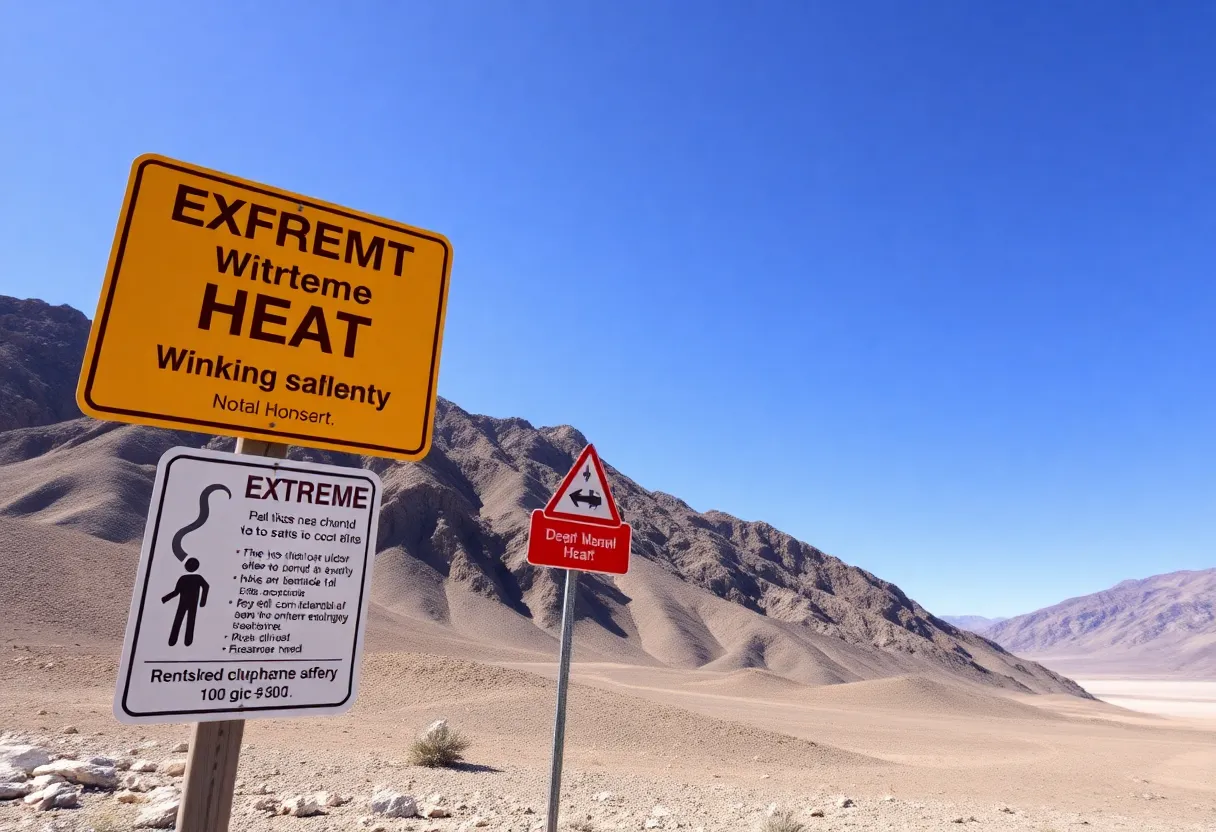News Summary
Death Valley National Park has reported extreme temperatures reaching 118°F, raising alarms for visitor safety. The National Park Service emphasizes heat precautions, as fatalities occur each year due to the intense heat. Experts urge visitors to stay hydrated, recognize heat illness signs, and avoid strenuous activities during extreme conditions. Safety reminders are posted throughout the park, highlighting the dangers of heat-related incidents. With challenges in rescue operations during high temperatures, awareness and preparation are essential for all guests visiting this iconic, yet perilous location.
Death Valley, California — Extreme heat in Death Valley National Park has raised safety concerns for visitors as temperatures soared to 118°F (47.78°C) on August 3, 2025. This alarming heat level underscores the importance of safety measures for those venturing into one of the hottest places on Earth. Visitors often travel to Death Valley driven by curiosity or for events such as multiday races, but they must remain vigilant about the dangers posed by extreme temperatures.
During their visit, Ray Estrada, who took his 11-year-old grandson to experience the extreme heat, was well-prepared with an umbrella, extra water, and electrolytes. He emphasized safety, advising his grandson to recognize signs of heat-related illness, such as dizziness, and to turn back if necessary. The park has reported an average of one to three heat-related fatalities each year, prompting the National Park Service to prioritize communication about heat safety.
Abby Wines, the acting deputy superintendent of Death Valley, noted that visitors often underestimate the dangers associated with extreme heat. The park holds the record for the hottest temperature on record, officially logged at 134°F (56.67°C) in July 1913, although some experts argue a true record might be 130°F (54.4°C) noted in July 2021. Dangers presented by heat should not be taken lightly, as heat-related incidents cause more fatalities in the U.S. than any other weather-related event.
Heat safety reminders are visible throughout Death Valley, with numerous signs indicating hazards, including “Stop. Extreme heat danger,” and “HEAT KILLS!” Hydro charts in park bathrooms offer guidance on hydration based on urine color to help visitors assess their need for water intake. Unfortunately, during extreme heat conditions, the park’s medical rescue options can be severely limited. Helicopters cannot safely operate in high temperatures; a case from last summer illustrates this danger, as a helicopter could not rescue individuals at 128°F (53.33°C).
While visiting on motorcycles, some tourists encountered serious heat-related issues, resulting in medical emergencies, including one fatality. Rescue efforts become more complicated as temperatures rise. Rescuers may have to wait until cooler evening conditions for assistance with lost hikers when temperatures exceed 115°F (46.11°C). Incident reports suggest that moderate temperatures ranging from 100°F to 115°F present a higher risk for visitors despite their seemingly less severe impression.
Death Valley offers over 50 entrances, which can reduce the chances of guests encountering rangers who provide safety information. Research indicates that permanent heat warning signs are often disregarded by visitors in favor of temporary warnings, which are perceived as more urgent. Experts have noted that providing specific, timely warnings can significantly improve public safety. For instance, a community’s leaders can influence social attitudes and behaviors regarding heat awareness.
Understanding different demographic perceptions of heat risks is essential for effectively communicating safety measures. Optimism bias leads individuals to feel immune to potential heat dangers, making it crucial to articulate specific symptoms and safety precautions. Recommendations for visitors include avoiding hikes in low elevation areas after 10 a.m., staying near vehicles, and maintaining proper hydration throughout their duration at the park.
In efforts to enhance public awareness, some researchers suggest naming significant heat waves, similar to hurricane naming conventions, to capture attention. Furthermore, clear visual cues, such as demonstrations of safe behavior—like consuming water and seeking shelter—can greatly facilitate successful communication of heat-related safety practices and encourage responsible behavior in extreme temperatures.
Deeper Dive: News & Info About This Topic
HERE Resources
Las Vegas Braces for Monsoon Season and Extreme Heat
Las Vegas Faces Extreme Heat Warning Amid Rising Temperatures
Las Vegas Residents Call for Improved Safety Measures at Dangerous Crosswalk
DUI Driver Hits Nevada Highway Patrol Vehicle, Trooper Injured
Tragic SUV Crash Claims Life in Las Vegas Amid Extreme Heat
Tragic Shooting at Las Vegas House Party Claims Teen’s Life
Extreme Heat Warning Issued for Las Vegas Valley
Tragic Crash in Las Vegas Parking Lot Claims Young Life
Extreme Heat Wave Affects Students Returning to School
Las Vegas Police Investigate Multiple Vehicle Crashes
Additional Resources
- Columbia Missourian
- The Sun Chronicle
- Transylvania Times
- Wikipedia: Death Valley
- MSN UK News
- Google Search: Death Valley safety measures

Author: STAFF HERE LAS VEGAS WRITER
The LAS VEGAS STAFF WRITER represents the experienced team at HERELasVegas.com, your go-to source for actionable local news and information in Las Vegas, Clark County, and beyond. Specializing in "news you can use," we cover essential topics like product reviews for personal and business needs, local business directories, politics, real estate trends, neighborhood insights, and state news affecting the area—with deep expertise drawn from years of dedicated reporting and strong community input, including local press releases and business updates. We deliver top reporting on high-value events such as Electric Daisy Carnival, World Series of Poker, and Consumer Electronics Show. Our coverage extends to key organizations like the Las Vegas Chamber of Commerce and Three Square Food Bank, plus leading businesses in hospitality and entertainment that power the local economy such as MGM Resorts International, Caesars Entertainment, and Las Vegas Sands. As part of the broader HERE network, we provide comprehensive, credible insights into Nevada's dynamic landscape.





